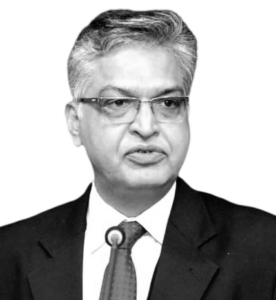
The latest edition of the All India Survey of Higher Education (AISHE), as published by the Ministry of Education, Government of India, reports that the number of Muslims in higher education declined from 21.01 Lakh in 2019-20 to 19.22 Lakh in 2020-21. Thus 1.79 Lakh Muslim students are missing from the higher education system of the country. As a result, the share of Muslim students in higher education has come down from 5.45% to 4.64% during the corresponding period.
This is when the total enrolment in higher education in India has gone up from 3.85 crore to 4.14 crore during the same period. This is also when, the enrolment of all other social groups – the Scheduled Castes (SCs), Scheduled Tribes (STs) and the Other Backward Castes (OBCs) has gone up. The only groups that have seen a decline are Persons with Disabilities, Muslims and Other Minorities.
Disquietingly, the share of Muslim students has declined across all higher educational institutions: central universities, from 8.41 to 8.24%; institutions of national importance, 1.92 to 1.87%; public-funded state universities, 5.29 to 4.30%; self-financed private universities, 4.25 to 3.87%; government deems universities, 1.10 to 1.03%; government-aided deemed universities, 14.55 to 11.84%; self-financed private deemed universities, 3.47 to 3.04%; colleges of central universities, 4.68 to 3.58%; and colleges of state universities from 6.05 to 5.09%.
What is all the more perturbing is the fact that Muslim enrolment in higher education has declined in 22 out of 36 states and Union Territories. In absolute numbers, the decline has been in UP (58,365), Jammu & Kashmir (47,334), Maharashtra (15,424), Tamil Nadu (14,593), Gujarat (10,909), Bihar (10,208), Andhra Pradesh (9,644), Jharkhand (9,263), Karnataka (6,153), Assam (5, 424), Delhi (5,271), Madhya Pradesh (2,862), Haryana (2,432), Manipur (2,049), Odisha (1,359), Rajasthan (1,193), Puducherry (785), Tripura (768), Chhattisgarh (691) and Himachal Pradesh (588), Arunachal Pradesh (57) and Meghalaya (16).
Muslim enrolment in higher education would have further declined during the year if it had not increased in Uttarakhand (8,281), Telangana (7.036), Kerala (4,902), West Bengal (2,837), Punjab (2,701), Goa (164), Ladakh (66), Nagaland (45), Dadra & Nagar haveli and Daman & Diu (36), Chandigarh (16), Mizoram (8), and Sikkim (1).
It is for the first time that the enrolment of Muslims in higher education has declined on year on year basis. Until 2019-20, their numbers had been increasing, though at a varying rate, and had gradually gone up from 6.97 lakh, (or 2.53% of the total enrolment in higher education) in 2010-11 to 21.01 Lakh (5.45%). The rate of growth in Muslim enrolment has, however, been declining lately. During the 2010-11 to 2014-15 quinquennial, the enrolment of Muslims in higher education grew by 15.03% per year which slowed down to 3.56% during the 2015-16 to 2020-21 sexennial. A decline in Muslim enrolment in higher education by a whopping 8.53% in one year is simply inexplicable.
Is it caused by the pandemic? But why were only Muslims affected? They are not the only social group which is economically poor and socially disadvantaged. They are also not the only one which majorly earns their livelihood through the informal and non-formal economy, which was affected by the pandemic very severely. It may be assumed that some errors have crept in the reporting of the data by the higher education institution or that 2020-21 has just been an aberration and it may be hoped that the numbers would go back to the usual normal when 2021-22 data is released.
While it may be perplexing to precisely pinpoint the reasons and causes for the sudden drop, the low enrolment of Muslims in higher education in India is generally attributable to a combination of socio-economic factors, educational disparities, and real and perceived discrimination. Socioeconomic conditions are known to play a pivotal role in determining access to higher education. Most Muslims in India come from economically disadvantaged backgrounds and face access barriers on account of poverty and lack of financial resources. Economic challenges also restrict their ability to pursue higher education due to the rising costs of availing of higher education.
Educational disparities, including inadequate access to quality primary and secondary education, also contribute greatly to the low enrolment of Muslims in higher education. Many Muslim-majority areas in India have lower-quality schools, inadequate infrastructure, and a lack of qualified teachers. Consequently, the students are ill-prepared to compete for higher education. Additionally, those who make it into the system face difficulties in meeting the required academic standards.
Muslims have been suffering marginalisation and underrepresentation in various spheres, including education for a long period of time now. They constitute close to 15% of the country’s population but have never been represented to this extent in any sphere of life including higher education. The latest guesstimates suggest that they have a representation of about 3% in civil services, 4.5% in railways, 6% in police constabulary, a little over 4% in medicare and 7.8% in judiciaries and 4.68% in higher education. The only solace was that their representation in higher education was gradually increasing both in absolute terms as well as percentage share. This was giving hope that they would catch up one day with their fellow citizens. The latest data marks the reversal of the trend and thus douses such hope.
Are Muslims becoming victims of systematic discrimination in higher education? Is it that Muslims are getting increasingly alienated and are withdrawing themselves? Is it that the increasing hostility against them by a certain section of society is making Muslims feel like pariahs in their own country? It may be argued that the Constitution of India guarantees not only equal but equitable treatment to all including Muslims and also special dispensation for religious minorities.
Muslims in India must feel protected, safe and well served as the Constitution of the country prohibits any discrimination on account of caste, colour, creed and religious beliefs. Hence the sense of alienation and discrimination in the Muslim community is only in their heads and far removed from reality. Even if we yield to this argument, it is worth realising that perceived barriers can’t be simply shunned away as they often lead to worst consequences than real barriers.

Furqan Qamar is professor at Department of Management Studies, Jamia Millia Islamia, a Central University under ACT of Parliament.